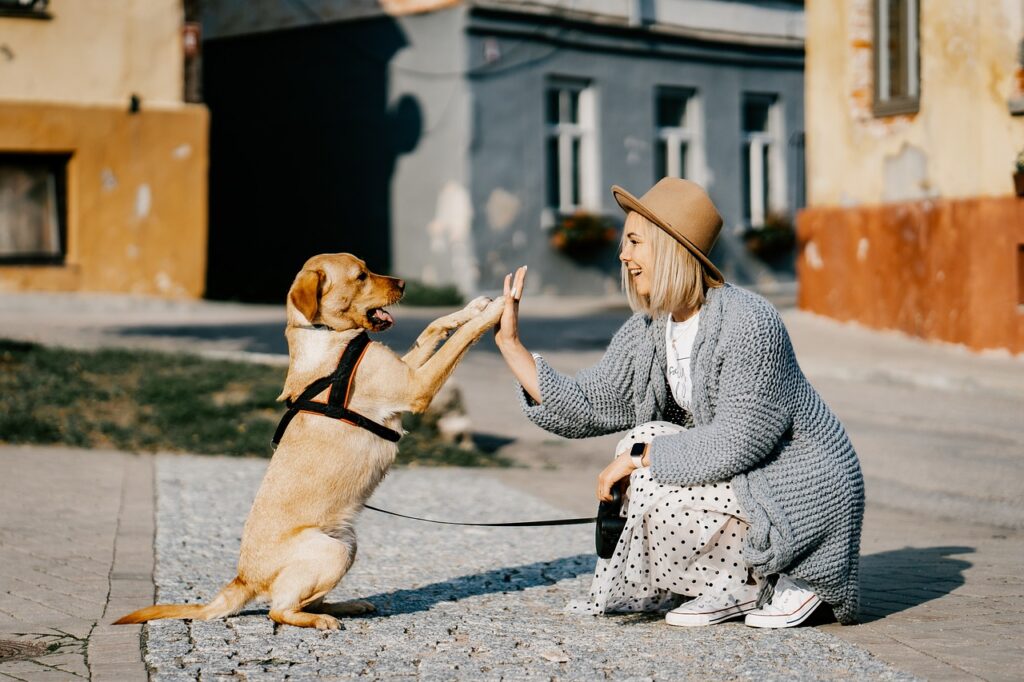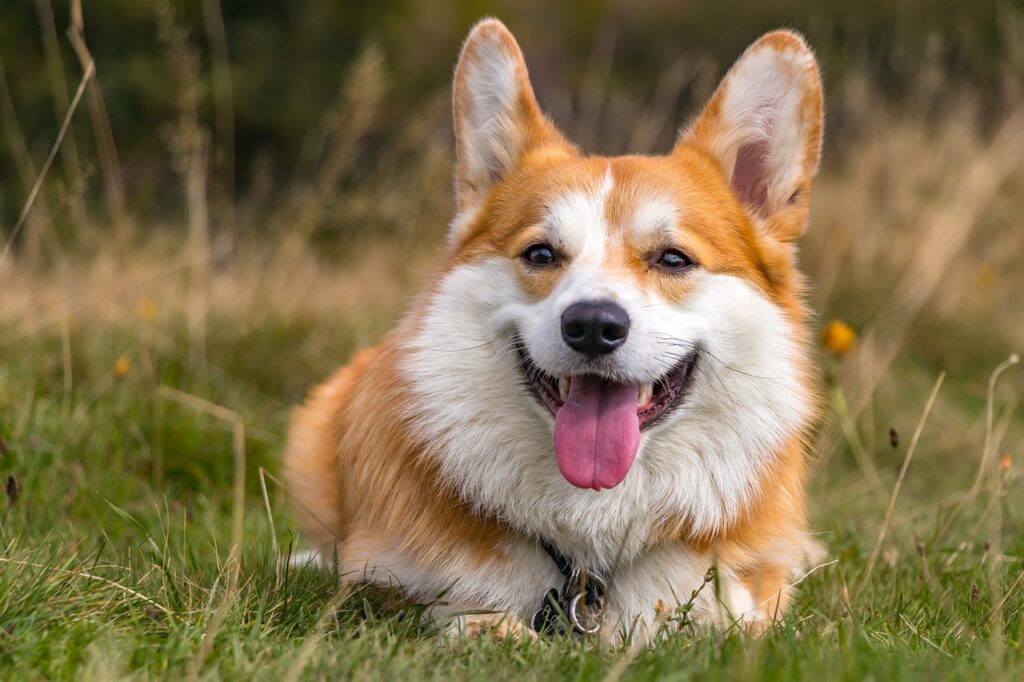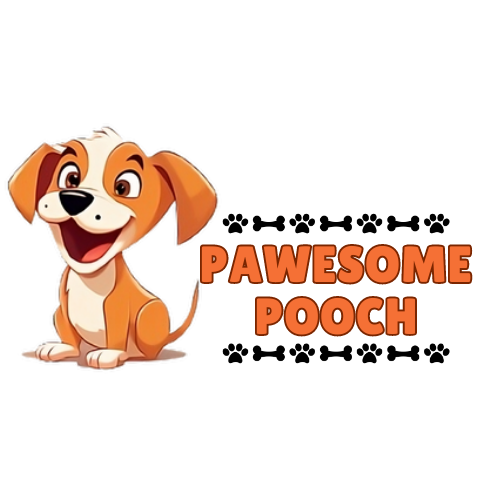
Are you curious about how to decipher if your furry friend is truly having a good time during an activity? We all want to ensure that our dogs are happy and content, but sometimes it can be challenging to interpret their emotions. Fortunately, there are a few key signs that you can look out for to determine if your beloved canine companion is truly enjoying themselves. By observing their body language, facial expressions, and overall behavior, you’ll be able to gauge whether your dog is thoroughly relishing the experience or perhaps not as enthusiastic as you initially thought. Let’s explore these indicators together and unlock the secret language of your dog’s enjoyment.

Understanding canine body language
Dogs communicate through body language, using various signals to convey their emotions and intentions. By understanding their body language, you can better understand what your dog is feeling and respond accordingly. Canine body language can be observed through facial expressions, body posture, tail movements, ear positions, and eye contact.
Interpreting facial expressions
A dog’s facial expressions can provide valuable information about their mood. A relaxed and open mouth, soft and relaxed eyes, and a slightly raised or neutral eyebrow position indicate a calm and content state. On the other hand, a tense and wrinkled forehead, wide eyes, bared teeth, and raised lips indicate fear, anxiety, or aggression. It is important to pay attention to these subtle cues to gauge your dog’s emotional state accurately.
Observing body posture
A dog’s body posture is an excellent indicator of their overall mood. When a dog feels confident and relaxed, they will typically hold their body in a neutral position. This includes having a straight back, relaxed muscles, and standing balanced on all four legs. On the contrary, a dog that is fearful or anxious may exhibit signs of cowering, a lowered head, a tucked tail, or a hunched posture. Understanding these body postures will help you better assess your dog’s emotional state.
Noticing tail movements
A dog’s wagging tail is often associated with happiness and excitement. However, the position and speed of the wag can convey different meanings. A high, fast wag usually signifies enthusiasm and friendliness. Conversely, a low, slow wag may indicate insecurity or a potentially aggressive stance. It’s essential to consider the context and other body language signals when interpreting your dog’s tail movements.
Analyzing ear positions
The position of a dog’s ears can provide insights into their emotional state. Ears held forward or slightly to the side often indicate attentiveness and interest. Relaxed ears that are neither forward nor back typically indicate a calm and content demeanor. However, ears pinned back against the head could be a sign of fear or aggression. By paying attention to your dog’s ear positions, you can gain a better understanding of their feelings.
Examining eye contact
Eye contact is a powerful tool in understanding canine communication. A soft gaze with a relaxed expression often signals trust and contentment. On the other hand, a hard stare or a wide-eyed look can indicate fear or aggression. It’s crucial to note that direct eye contact can be seen as a challenge or a threat in some dog-to-dog interactions. Be aware of your dog’s comfort level with eye contact and respect their boundaries.
Identifying signs of excitement
Dogs can express their excitement in various ways. By recognizing these signs, you can determine if your dog is truly enjoying an activity.
Bouncy and energetic behavior
When a dog is excited, they may exhibit a bouncy and energetic demeanor. They may jump around, run in circles, or have an overall high level of enthusiasm. This lively behavior is often accompanied by a wagging tail and a happy expression.
Tail wagging vigorously
A dog wagging their tail vigorously is a clear indicator of excitement and enjoyment. A happy tail wag is usually accompanied by a relaxed body posture and a positive facial expression. It’s important to note that not all tail wagging is a sign of happiness, and it’s essential to consider other body language cues in conjunction with the tail movement.
Jumping or leaping
Jumping or leaping is often seen as an expression of excitement and eagerness. Dogs may jump up to greet you or jump around during playtime. This behavior is their way of showing enthusiasm and anticipation.
Play bowing
The play bow is a classic sign of excitement and readiness for play. When a dog performs a play bow, they lower their front end while keeping their rear end elevated. This posture signals an invitation to engage in play and often occurs between dogs or during interactive games with their human companions.
Recognizing signs of relaxation
Just as it’s important to identify signs of excitement, it’s equally important to recognize when a dog is relaxed and at ease.
Loose and wiggly body
When a dog is relaxed, their body will typically appear loose and wiggly. Their muscles will be relaxed, and they may flop onto their side or back, showing a lack of tension. This indicates a sense of comfort and contentment.
Relaxed facial muscles
A relaxed dog will have soft, relaxed facial muscles with no signs of tension. Their mouth may be slightly open, their eyes will appear calm, and their forehead will be smooth. These overall relaxed facial expressions are indicators of a peaceful state of mind.
Flat and relaxed ears
Relaxed ears are neither forward nor pinned back against the head. They will rest naturally in a neutral position, indicating that the dog is feeling at ease and comfortable in their surroundings.
Lying down with belly exposed
A dog who lies down and exposes their belly is showcasing their vulnerability and trust. This behavior signifies a deep level of relaxation and confidence. It’s important to approach a dog in this position gently and respectfully to maintain their trust.
Detecting signs of playfulness
Playfulness is an essential aspect of a dog’s personality and can also indicate their enjoyment of an activity. Recognizing signs of playfulness will help you gauge their level of enjoyment.
Barking or vocalizing
Barking or vocalizing during play is a common sign of enjoyment and excitement. Dogs may bark, growl playfully, or make other playful vocalizations to express their enthusiasm.
Chasing or being chased
When dogs engage in chasing or being chased during playtime, it is a clear sign of enjoyment. This behavior mimics natural predatory instincts and allows them to burn off excess energy in a playful manner.
Tug-of-war or wrestling
Participating in tug-of-war or wrestling games with you or other dogs is a strong indication of playfulness. These interactive activities allow dogs to engage in physical play while having fun.
Engaging in zoomies
The zoomies refer to sudden bursts of frenetic energy and running in circles or back and forth. Dogs often engage in zoomies when they are feeling playful and full of energy. This behavior is a clear sign of enjoyment and can be quite entertaining to watch.

Noticing signs of engagement
When a dog is engaged in an activity, they are actively participating and demonstrating interest. Recognizing signs of engagement will help you understand if your dog is enjoying the activity or task at hand.
Focused attention
Engaged dogs will demonstrate focused attention on the activity or the person they are interacting with. They may maintain eye contact, track movements, and exhibit a heightened level of concentration.
Alert and eager expression
An engaged dog will have an alert and eager expression on their face. Their eyes may appear bright and attentive, and their body may be slightly forward-leaning, indicating their readiness to participate.
Active participation
Active participation involves a dog actively taking part in the activity. This may include following cues, performing commands, or actively interacting with toys or objects. Dogs that are engaged will show enthusiasm and willingly engage in the desired behavior.
Seeking interaction or cues
Engaged dogs often initiate interaction or seek cues from their human companions. They may nudge, paw, or bring toys as a way of showing their interest and inviting further interaction.
Assessing appetite and food motivation
A dog’s appetite and food motivation can be an excellent means of gauging their enjoyment of different activities.
Showing excitement during mealtime
If your dog gets excited and eagerly anticipates mealtime, it is a good indicator that they find the act of eating enjoyable. Their enthusiasm may be evident through wagging tails, barking, or dancing around while their food is being prepared.
Demonstrating eagerness to eat treats
When a dog eagerly takes treats from your hand and quickly consumes them, it demonstrates their enjoyment of the food reward. Their eagerness and enthusiasm for treats can be a useful measure of how much they are enjoying the training or activity they are engaged in.
Maintaining healthy eating habits
A consistently healthy appetite with no signs of decreased interest in food is a positive indicator that your dog is enjoying their overall daily routine and activities. Regular and healthy eating habits are usually a sign of contentment.
Showing a preference for certain activities involving food
If your dog shows a strong preference for specific activities that involve food, such as puzzle toys or food-dispensing devices, it suggests that they find these activities particularly enjoyable. Pay attention to their level of excitement and engagement during such activities to determine their overall enjoyment.

Observing changes in behavior
Monitoring changes in your dog’s behavior can provide valuable insight into their enjoyment of specific activities.
Increased energy level
If your dog displays an increase in energy level during or after an activity, it can be a sign that they are enjoying themselves. A sudden burst of liveliness, playfulness, or increased stamina can indicate that they find the activity stimulating and engaging.
Enthusiastic response to stimuli
When your dog responds to stimuli with enthusiasm and excitement, it’s a positive sign that they are enjoying the experience. Keep an eye out for their level of engagement, tail wagging, barking, or general eagerness when exposed to different sights, sounds, or objects.
Willingness to repeat the activity
If your dog willingly engages in an activity multiple times, it’s an indication that they find it enjoyable. Dogs are creatures of habit and tend to repeat behaviors they find rewarding or pleasurable.
Showing signs of anticipation or excitement
Dogs will often show signs of anticipation or excitement before engaging in activities they enjoy. This may include wagging tails, jumping, barking, or pacing with excitement. These behaviors suggest that they are anticipating and looking forward to the activity.
Considering breed traits and preferences
It’s important to consider breed-specific characteristics and preferences when gauging your dog’s enjoyment of activities.
Understanding breed-specific characteristics
Different dog breeds have distinct characteristics that may influence their preferences and enjoyment of activities. For example, herding breeds often enjoy mentally stimulating activities, while sporting breeds may thrive on activities that involve physical exercise and retrieving.
Recognizing inherent instincts
Dogs have inherent instincts that may influence their enjoyment of certain activities. For instance, scent hounds may delight in activities that allow them to use their powerful sense of smell, while terriers may enjoy activities that involve digging or searching for prey.
Knowing preferred activities for different breeds
Researching and understanding the preferred activities of different dog breeds can help you choose activities that align with their natural tendencies. Border Collies, for instance, often enjoy agility training, while Siberian Huskies may enjoy activities that allow them to pull or run in colder climates.
Tailoring activities to suit breed traits
By tailoring activities to suit the specific traits and preferences of your dog’s breed, you can enhance their enjoyment and engagement. Providing activities that align with their natural instincts and energy levels can lead to a more fulfilling experience for both you and your dog.
Consulting with a professional
If you have any concerns or need further guidance on gauging your dog’s enjoyment of activities, it is advisable to consult with a professional.
Seeking guidance from a veterinarian
Your veterinarian is a valuable resource when it comes to understanding your dog’s needs and preferences. They can provide advice on appropriate activities and help address any health or behavioral issues that may impact your dog’s enjoyment.
Consulting a certified dog trainer
A certified dog trainer can offer expert guidance on training methods and activities that are enjoyable for your dog. They can assess your dog’s behavior, provide personalized recommendations, and help improve your dog’s overall engagement and enjoyment.
Contacting a professional animal behaviorist
If you are encountering behavioral issues or need in-depth assistance, consulting a professional animal behaviorist can be beneficial. They are trained to evaluate and address various behavioral concerns, including identifying factors that may affect your dog’s enjoyment of activities.
Participating in dog training classes or workshops
Enrolling in dog training classes or workshops can provide valuable insights into understanding your dog’s enjoyment of activities. These group settings offer opportunities for socialization and learning from experienced trainers while fostering a positive and enjoyable training experience for your dog.
Taking the individual dog into account
While general guidelines can be helpful, it’s crucial to take your individual dog’s personality and preferences into account when evaluating their enjoyment of activities.
Knowing your dog’s personality and preferences
Every dog is unique, with their own personality and preferences. Pay close attention to your dog’s responses to different activities and tailor their experiences based on what brings them joy and fulfillment. Some dogs may thrive on high-energy activities, while others may prefer calm and relaxing interactions.
Considering any past traumatic experiences
Dogs who have had past traumatic experiences may exhibit different reactions to certain activities. Be mindful of any triggers that may cause fear or anxiety and modify activities accordingly. Creating a safe and comfortable environment for your dog is crucial to ensuring their enjoyment.
Understanding your dog’s unique body language
Each dog has their own unique way of expressing themselves through body language. By familiarizing yourself with your dog’s specific signals and cues, you can better understand their emotions and adjust activities accordingly. Whether it’s a particular tail wag or a specific ear position, knowing your dog’s individual body language will help you gauge their enjoyment accurately.
Learning from trial and error
The process of understanding your dog’s enjoyment of activities is a continuous learning experience. Through trial and error, you will gain a better understanding of what resonates with your dog and what activities they truly enjoy. Pay attention to their reactions and adjust activities as needed to ensure they have the best experience possible.
In conclusion, understanding your dog’s body language is key to determining their enjoyment of various activities. By observing their facial expressions, body posture, tail movements, ear positions, and eye contact, you can gain valuable insights into their emotional states. Recognizing signs of excitement, relaxation, playfulness, and engagement will help you gauge their enjoyment accurately. Additionally, considering breed traits, consulting with professionals, and taking your individual dog’s preferences into account will further enhance their overall experience. Remember that each dog is unique, so it may take time and patience to fully understand what brings your furry friend the most joy. Ultimately, by paying close attention to their communication and cues, you can ensure a fulfilling and enjoyable experience for both you and your beloved canine companion.

